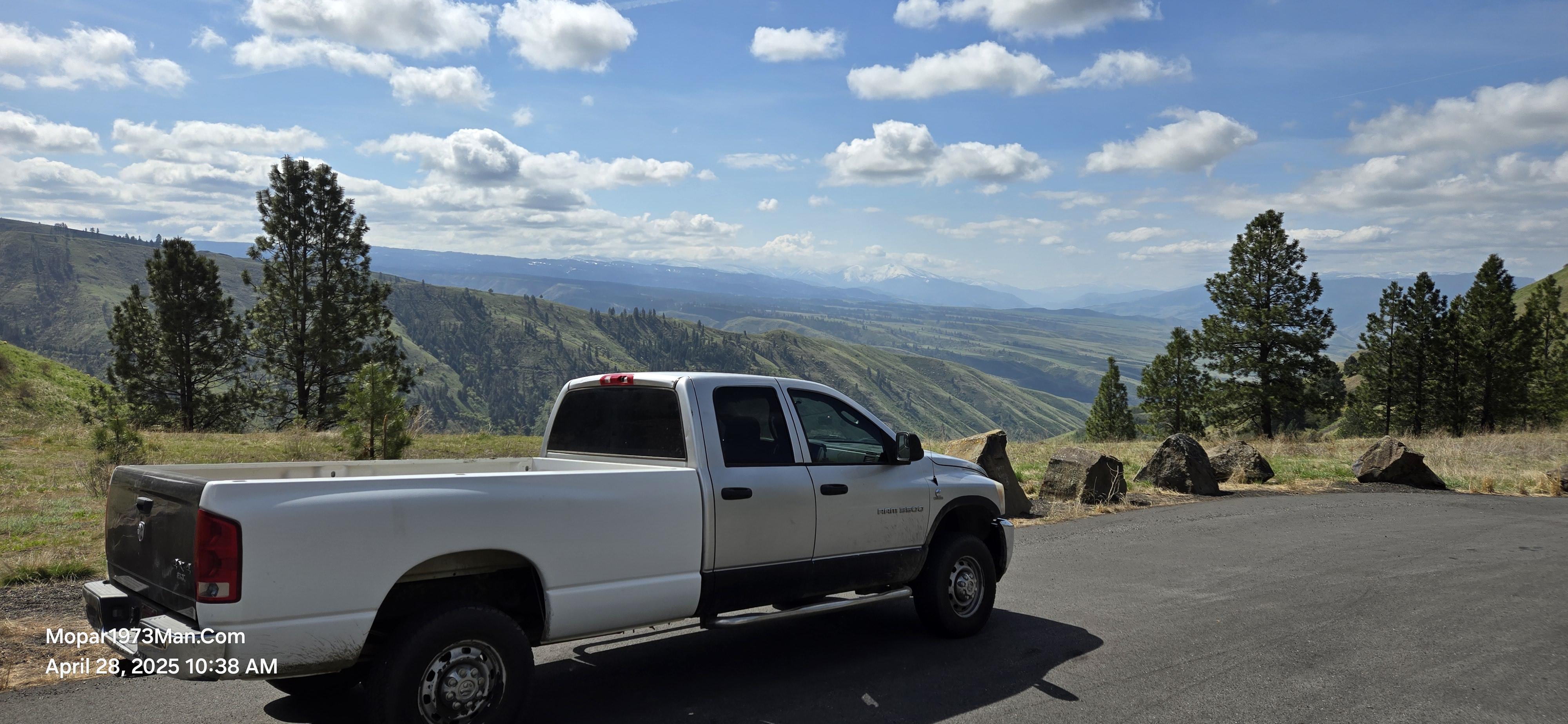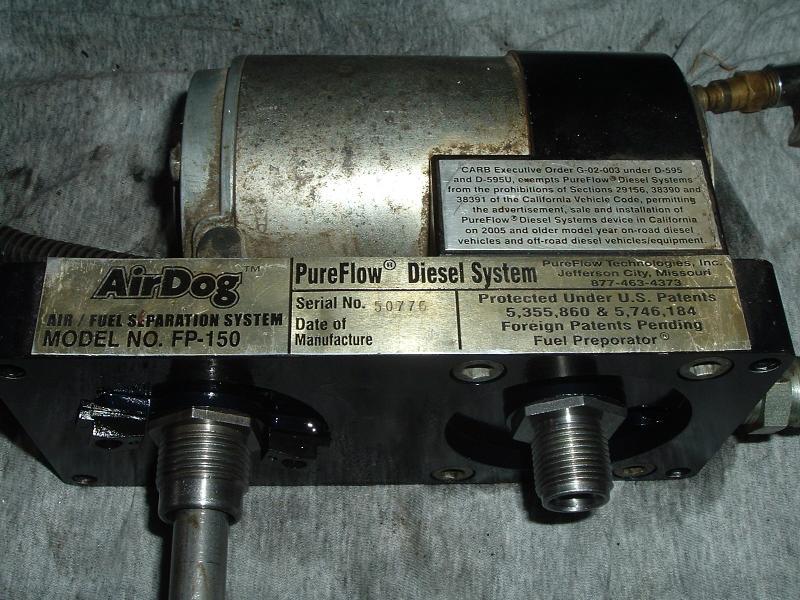
Everything posted by Mopar1973Man
-
Lift Pump took a dump
You need to unplug the pump. Bump the starter. Measure the voltage at the plug. If 12V is present everything is fine with the ECM and the lift pump is junk. If 0V is at the plug you just lost the ECM lift pump circuit. Also, the lift pump is junk too which caused the ECM failure.
-
Lift Pump took a dump
AirTex pump. That is direct connected to the ECM. Test to see if the ECM is still producing power to the lift plug (disconnected) with a starter bump.
-
Does this bother anyone else?
Another thing if you didn't catch it but I did the door jam in the first picture appears to be dark blue. Come on you can't even paint the entire rig door jam and all? What is this an Earl Scheib paint job?
-
Laughter is very good medicine
One of the few reason I never bought into the iPhone Craze. I might not be much better with an Android (just fitting for the video). My circumstance is different than most people mine is used as a true tool and like 99.9% iDiots out other. Since I'm on the road 3 days a week I use my cell phone to keep up with the website and business as a travel. Now seeing two people in the same room texting each other, now that is stupid. What happened to getting together and talking using your voice and looking the person in the face? I'm used to seeing kids playing in the river and swimming. Even back in the day kids creating places in the forest to go camping and hang out. Now all you see is kids sitting at home with their tablet or phone. Mostly on Facebook. Again here is a platform I don't really use. I use it for advertising the site but I don't go posting about what I did everyday.
-
Missing, random codes, occasional stumble at idle
I'll admit its rather confusing but that's what came out of the book.
-
quad v2 wiretap settings
Tap on the text box at the bottom and enter each one by hand. The EQ sliders personally suck. Look cool but impossible to use. Especially when you're trying to hit exactly one number.
-
Advanced timing with Blue Chip Special X VP44
This is exactly true... Special X pumps and Hot Rod pumps are now a thing of the past. The other problem like I've learned in tuning now is everyone forgets about their fuel cetane rating. My current tune is bit retarded compared to stock in the cold weather. Being the fuel ignition ability is better as cetane goes up so adding timing on high cetane fuel will actually increase engine load (fuel consumption).
-
Does this bother anyone else?
The back seat is even worse... Can't you even afford to keep the interior the same?
-
Morning Pic For Today...........Post A Pic around your place.....
Correction for you...
-
wait to start light is periodically not coming on
Key has nothing to do with it. The key lock and the key switch are separate parts.
-
Lift Pump Question
Remember 50:1 ratio small 2 cycle engine can run up 10,000 RPM without damage. 128:1 ratio should cover a majority of all diesel fuel. #1 diesel would be a different animal and would lean towards a richer oil mixture. Even 64:1 would be 2 ounces of oil to 1 gallon of fuel.
-
quad v2 wiretap settings
Man, that sucks I've got to rebuild my tunes on the 2.7 version... I wish it would import the setting but it don't...
-
Lift Pump Question
I'll leave it alone and let it go. There is more to be said about it. I'll agree that he's right it is a farce to a degree but what I like about it he's not considered one bit...
-
quad v2 wiretap settings
I'll have to check the permissions might be a error of setting.
-
quad v2 wiretap settings
Moving over to Quadzilla forum for more eyes. @Me78569 Tagging Nick to bring him to the post.
-
Lift Pump Question
Air Separation you won't be able to do. The filter head is design with 2 fittings and straw in the center. So actual engine fuel is delivered from the bottom of the filter and the air rises up and leaves at the top fitting. You can see what I mean kind of in this picture the filter is in on the left fitting. No DDRP pumps. Most of these do not have the full size fittings for 1/2" plumbing. The problem with stand-alone pumps there is no 3rd port for return these pump are more common for cavitation issues because they just return the pressure back to the inlet of the pump.
-
P0500-Surging
P0500 is a rear speed sensor code. The sensor is in the rear differential on top. Now are you seeing any issues with your speedometer at all if not then it might be a front sensor that is failing. It's typically best to replace all speed sensor as a set. This that doesn't help it could be a failed tone ring been there...
-
Failed BD third gen track bar bracket
In those photos I was trying to even find the crack.
-
Lift Pump Question
Fuel system first then the Quadzilla. That is typically the order. If you do the Quadzilla don't tap the wire till you do get the FASS.
-
Does this bother anyone else?
2nd Gen body NEVER had a 4 door cab. That is what is wrong there. The cab was extended and the bed was shorten and moved back. Piss poor job the truck lost major value.
-
Teardown and Rebuild
No. Just looks pretty.
-
Lift Pump Question
Do a full FASS fuel system. If you do the DDRP you still need to buy two spin on filter bases and put a pre filter before the pump and then a 3 micron filter after the pump. Because stock is only 10 micron better filtration is always key to long life of the fuel system. So by the time you add that all together and the fittings and filters you might be in it for the same as a full FASS.
-
2000 to 2002 Steering upgrade
Most likely a wheel alignment problem. Is there any strange tire wheel on the front tires?
-
The crf450ish random question thread.
Good point. But all my battery cables are in excellent condition and no loss in the connection or cables. The only thing that I can find that is in excess of rating would be grid heaters. So explain this picture and why the fusible link has blown? 400 Amp load? (No this is not my truck but this is a 12V Cummins) Again...
-
Buy Fass Titanium from?
All birds are edible. I would just stand on the wings and pull the legs. Then end up with breast meat. Good eating. Just like the last Grouse I didn't shoot. It flew into the window and broke its neck. Just Walked out stood on the wings pulled the legs. Snap the wings off and wash the beast meat off. Put in a plastic bag and froze it. Week later I made a batch of Top Ramen and boiled that grouse meat up and chopped it up in the Ramen and that was good eating. I've had a few Quail fly into the window still just a bird and they eat just as good as a Grouse.






